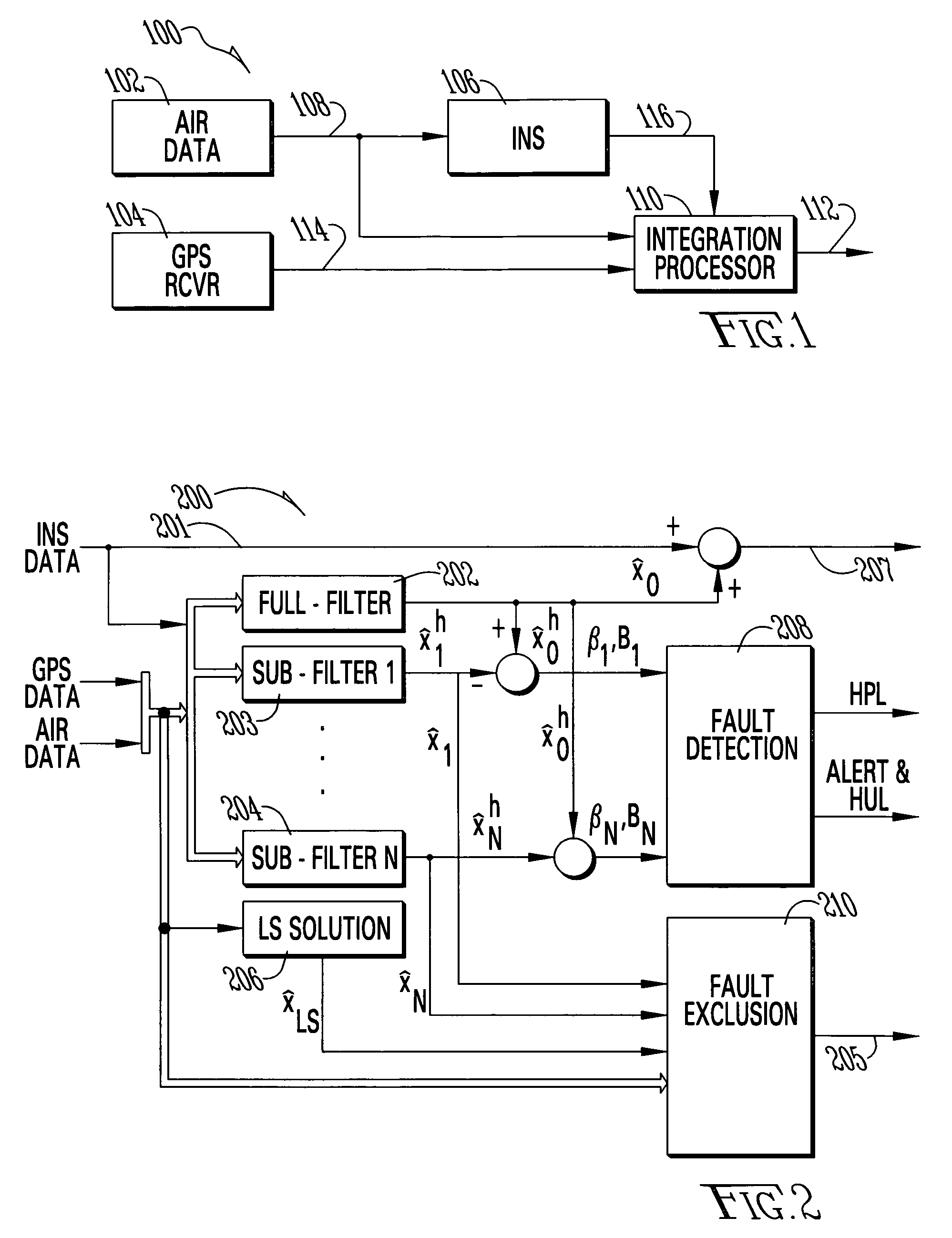Method and system for fault detection and exclusion for multi-sensor navigation systems
- Summary
- Abstract
- Description
- Claims
- Application Information
AI Technical Summary
Benefits of technology
Problems solved by technology
Method used
Image
Examples
Embodiment Construction
[0026]Now referring to the Figures, where like numerals refer to like matter and text throughout, and more particularly referring to FIG. 1, generally designated 100, there is shown a block diagram of the GPS / INS integration architecture of the present invention. This is an open loop integration such that there is no feedback to the INS 106 or the GPS receiver 104 from the integration processor 110. Air data 102 is shown to be provided to both the INS 106 and the integration processor 110 which outputs a corrected position 112, as well as other data including HPL, HUL, shown in FIG. 2. The proposed Kalman filter is executed in the integration processor 110. Also in FIG. 1, 108 represents an altitude line; 114 represents a pseudoranges and SV ECEF positions line; and 116 represents a position, velocity and attitude line.
[0027]Now referring to FIG. 2, there is shown the architecture, generally designated 200, of the integration processor 110. There are multiple navigation solutions fo...
PUM
 Login to View More
Login to View More Abstract
Description
Claims
Application Information
 Login to View More
Login to View More - R&D
- Intellectual Property
- Life Sciences
- Materials
- Tech Scout
- Unparalleled Data Quality
- Higher Quality Content
- 60% Fewer Hallucinations
Browse by: Latest US Patents, China's latest patents, Technical Efficacy Thesaurus, Application Domain, Technology Topic, Popular Technical Reports.
© 2025 PatSnap. All rights reserved.Legal|Privacy policy|Modern Slavery Act Transparency Statement|Sitemap|About US| Contact US: help@patsnap.com



